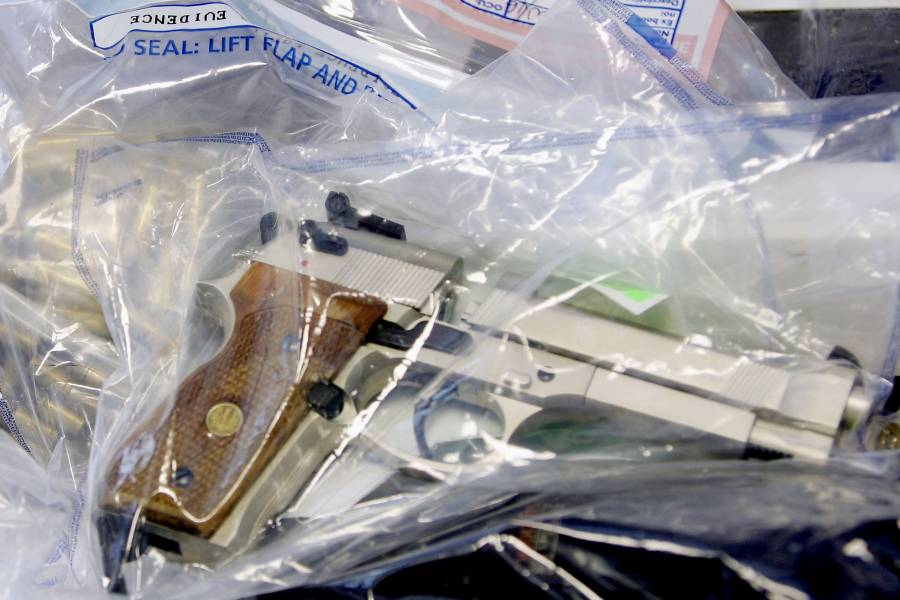A new report from the Johns Hopkins Center for Gun Violence Solutions analyzes Centers for Disease Control and Prevention firearm fatality data for 2020—a year that saw the highest number of gun-related deaths ever recorded by the CDC and a sharp increase in gun homicides. Among other things, the report concludes that states with the most robust gun laws have lower gun-related death rates.
The report, A Year in Review: 2020 Gun Deaths in the U.S., illustrates the enormous toll gun violence has in the U.S. The report provides an in-depth analysis of the 2020 CDC firearm fatality data, which was made public in December 2021; a look at demographic and state-level geographic differences; and a comparison of other injury fatalities. The report also highlights evidence-based policy recommendations states can implement to help curb gun violence in all its forms.
Gun violence in the U.S. surged in 2020 as the country grappled with an unfolding pandemic, deep political divisions and social unrest, economic disruption, and social isolation. Using CDC mortality data, the analysis revealed that overall firearm-related deaths increased by 15% in 2020 to 45,222, the highest number ever recorded by the CDC since it began tracking firearm deaths in 1968. This translates to 124 individuals on average dying from gun violence every day. Firearm homicides increased 35% in 2020, with nearly 5,000 more homicides compared to 2019. While the number of firearm deaths increased to a record level in 2020, the rate—13.62 per 100,000 deaths—did not exceed historic highs of the 1990s.
The 2020 data reveals striking differences across ages, gender, ethnicity, and U.S. states. As in recent years, gun violence was the leading cause of death for young people under age 25. Young people under 30 were nearly 10 times more likely to die by a firearm than from COVID-19 in 2020. On the other end of the age spectrum, people age 75 and older were at highest risk for dying by gun suicide, with a gun suicide rate twice the national average.
In 2020, gun-related homicides disproportionately impacted Black people—and especially Black males—more than their white counterparts. Young Black males represent 2% of the total U.S. population but accounted for approximately 38% of all gun homicide deaths in 2020. Black children and teens face alarmingly high rates of gun victimization. More than half of all Black teens (15-19) who died in 2020—52%—were killed by gun violence. Black males ages 15 to 34 were over 20 times more likely to die by gun homicide than their white counterparts. There was a 49% increase in the number of gun homicides among Black females compared to 2019.
Overall, males were five times more likely to die by gun homicide than females, and nearly seven times more likely to die by firearm suicide than females. The report authors note that firearm homicide rates are driven by high rates of firearm homicides among Black males. High rates of firearm suicides are driven by high rates of firearm suicides among white males.
The report also put firearm fatalities in context with other injury fatalities, noting that injuries make up a substantial burden of premature death in the U.S. After overdose and poisoning deaths (97,034), firearm deaths—homicides and suicides (45,222)—were the second-leading cause of injury deaths in 2020, followed by falls (43,292) and motor vehicle traffic (40,698).
The report analyzed 2020 fatality data collected by the CDC's Wide-ranging Online Data for Epidemiologic Research database, a publicly available database on an array of public health issues. The data is based on death certificates, which reflect the primary cause of death.
"Some of these data are stunning, like the number of firearm homicides among Black women increasing by nearly 50%," says Cassandra Crifasi, associate professor in the Department of Health Policy and Management and deputy director of the Johns Hopkins Center for Gun Violence Solutions. "We hope calling attention to them with context and recommendations will elevate the conversation around gun violence prevention."
The year 2020 also saw a record number of gun sales. The report cites research that found that nearly twice as many of these new guns showed up at crime scenes in 2020 than in 2019.
The report found wide variations among states. States with the highest gun death rates in 2020 were rural states in the South or West. Mississippi had the highest rate of gun deaths in 2020: 28.63 per 100,000 deaths, followed by Louisiana at 26.26 per 100,000, and Wyoming at 25.9 per 100,000. Conversely, Hawaii had the lowest gun death rate: 3.37 per 100,000, followed by Massachusetts at 3.74 per 100,000 deaths, and New Jersey at 5.03 per 100,000.
States that had the highest gun death rates in 2020 had stand-your-ground legislation, or laws that authorize individuals to use lethal force even in situations they might have otherwise been able to walk away from, and three of the five had permitless carry laws, which allow individuals to carry a concealed gun in public without a permit.
The researchers note that the states with the lowest gun death rates have stronger gun laws. Each of the five states with the lowest gun death rate had both the following gun laws in place in 2020: a firearm purchaser licensing law or a waiting period and an Extreme Risk Protection Order law. Purchaser licensing laws require an individual to apply for and obtain a license before purchasing a firearm. The report authors recommend states implement such laws to curb gun violence and note that these laws are supported by more than 75% of adults, including more than 60% of gun owners and Republicans. Extreme Risk Protection Orders are a type of firearm removal law that create a civil process allowing law enforcement, family members, and, in some states, medical professionals, to petition a court to temporarily separate someone at risk of harming themselves or others from their firearms. The report authors recommend that states put in place firearm removal laws such as Extreme Risk Protection Orders and Domestic Violence Protection Orders, which protect victims and survivors of domestic abuse, in order to limit gun violence.
"While gun violence affects people from all walks of life, the burden is not distributed evenly across the U.S. As the report details, gun violence varies widely by state and across demographic groups," says Ari Davis, policy adviser at the Bloomberg School's Center for Gun Violence Solutions and lead author of the report. "Policymakers who want to take action can look to states with lower gun-related deaths and adopt these evidence-based strategies like purchaser licensing and firearm removal laws."
Posted in Health











